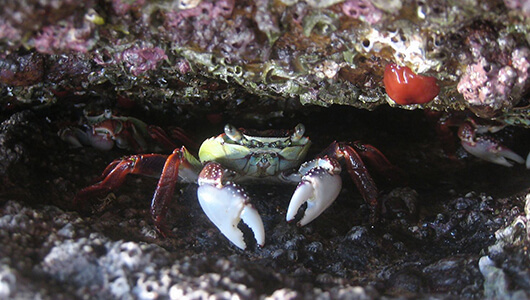This is a lesson summary. The full lesson can be viewed by purchasing an online course subscription.
Learning Objective
In this lesson we will be introduced to ecology – the study of living things and their environment.
Learning Outcomes
By the end of this lesson you will be able to:
- Define the terms ‘environment’, ‘ecosystem’, ‘biodiversity’ and ‘ecology’.
- Differentiate between ‘biotic’ and ‘abiotic’ environmental factors, with examples.
- Describe the different levels of ecological organisation, with examples.
- Discuss how ecosystems are dynamic systems.

(Image: Sid Mosdell, Wikimedia Commons)
Lesson Summary
- Ecology is the study of the interactions between living things and their environment.
- Environment refers to all things and conditions that surround an organism.
- Environment can be divided into biotic and abiotic factors.
- Biotic factors include living things and materials derived from living things.
- Abiotic factors include non-living things and environmental conditions.
- There are several levels of ecological organisation:
- Organism → population → community → ecosystem → biosphere
- A population is a group of the same species of organism living and interacting within a specific area.
- A community includes all species living and interacting within a specific area.
- An ecosystem includes all species living and interacting within a specific area, as well as the non-living components of that area.
- The biosphere incorporates all ecosystems on Earth.
- The biodiversity of an ecosystem is a measure of the numbers of different species within it, as well as the variation within each species.
- Ecosystems are referred to as dynamic systems as they are always changing.
- Natural ecosystems are generally stable and maintain biodiversity.
- Ecosystems that have been impacted by human activities are less stable and have reduced biodiversity.

(Image: Avenue, Wikimedia Commons)
(Header image: Save Jungle, Adobe Stock)
